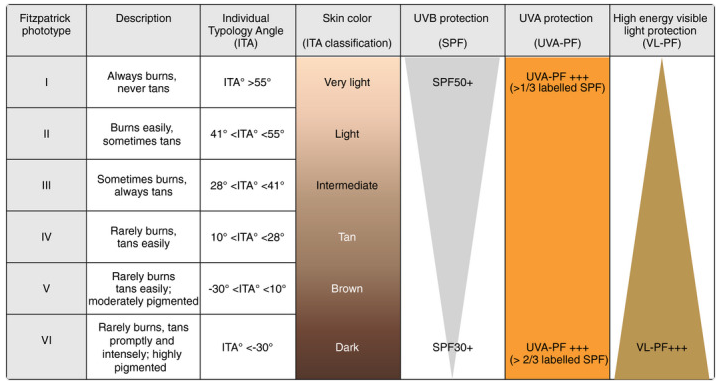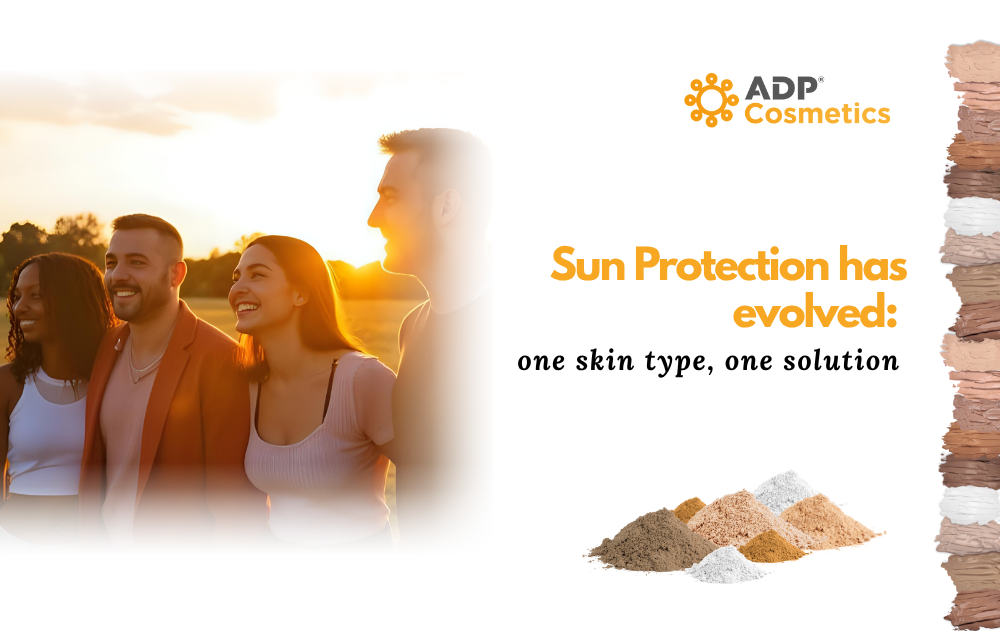In a world where awareness of skin health and environmental impact is constantly growing, the demand for generic cosmetic solutions has been left behind. Today, science and consumers converge on an increasingly evident truth: the imperative need to develop skin protection and care products “tailored” to the unique needs of each individual. This goes beyond a simple sun protection factor; it involves considering phototype, pre-existing damage, particular skin conditions (sensitivity, dermatoses, atopic tendencies, psoriasis), the type of exposure to various radiation wavelengths, and other important conditions. Only then can the specific protection and care that each skin deserves be guaranteed.
Tailored Protection: Each Phototype Has Particular Needs
Solar radiation is a complex spectrum, and its effects on the skin vary significantly depending on phototype and other biological factors. A “one-size-fits-all” approach to photoprotection is no longer sufficient:
- Fair Skin (Phototypes I-III): For these phototypes, the primary focus of photoprotection has historically been the prevention of sunburn and UVB radiation-induced DNA damage, given their high vulnerability. UVB protection is paramount to reducing skin cancer risk.
- Dark Skin (Phototypes IV-VI): Although darker skin possesses intrinsic natural protection against UVB radiation due to its higher eumelanin content, it is particularly susceptible to other types of damage. Recent studies have shown that visible light (VL) and UVA radiation can generate reactive oxygen and nitrogen species, contributing to skin damage and, crucially, hyperpigmentation. For these phototypes, additional protection against visible light and UVA is essential to prevent the appearance of spots and maintain an even tone.
- Deep Radiation for Everyone: Beyond UVB, it is crucial to recognize that UVA waves (especially long-wave UVA1), visible light (VL), and infrared A (IR-A) radiation penetrate deeply into the skin, causing photoaging in all phototypes. UVA1, in particular, plays a critical role in pigmentation, photoaging, skin cancer, DNA damage, and photodermatoses. Therefore, protection against these wavelengths is beneficial for all skin types, regardless of color.
In addition to phototypes, specific skin conditions such as photodermatoses, pigmentary disorders (like melasma), inflammatory skin diseases (like rosacea or atopic dermatitis), and sensitive or weakened skin (including that of oncological or pediatric patients) require adapted sunscreen formulations and textures to ensure maximum tolerance and efficacy. And all of this is now possible.

Table 1: Fitzpatrick skin phototypes, classification, and the need for ultraviolet A, ultraviolet B, and visible light protection from sunscreen.
Adapted from Passeron et al. Photoprotection according to skin phototype and dermatoses: practical recommendations from an expert panel. J Eur Acad Dermatol Venereol. 2021;35(7):1460-69.
ADP Cosmetics: Innovation at the Service of Adaptation
In this landscape of personalized needs, ADP Cosmetics’ mineral filters are positioned as the ideal solution for formulators and brands seeking to innovate and respond precisely to the demands of an increasingly informed, connected, and demanding market. Their filters not only offer broad-spectrum protection against UV radiation, visible light, blue light, and infrared, but are also designed with unique versatility that facilitates the creation of truly adapted products, both for particular skin conditions and for different skin tones.
- Unprecedented Protection and Versatility: ADP’s mineral filters can be formulated in aqueous, oily, and anhydrous phases, offering unparalleled flexibility to develop a diverse range of products. This capability allows formulators to create solutions with different protection levels, tones to avoid white cast on any phototype (as a single ingredient combines color and protection), and textures ranging from ultra-light to full-coverage.
- Tailored Care and Facilitated Creativity: The ability of ADP filters to integrate into different bases and offer additional properties (such as their use in tinted/colored products that merge protection and treatment) greatly simplifies the development of multifunctional formulations and “skinimalism.” This allows for addressing not only basic protection, but also extra care needs such as hydration, spot prevention, or soothing action for sensitive skin.
- Commitment to Sustainability and Innovation: ADP Cosmetics not only provides a multifunctional ingredient; it facilitates creative and innovative processes by delivering tools that respond to an increasingly informed consumer. This consumer, who demands tailored care and sustainable solutions, finds in products formulated with ADP’s mineral filters the answer to their demands for efficacy, safety, and environmental respect.
In summary, adaptation is not just a trend; it is the inevitable direction of the skincare industry. With ADP’s mineral filters, formulators and brands hold the key to developing products that not only protect, but also understand, respect, and adapt to the individuality of each skin.










